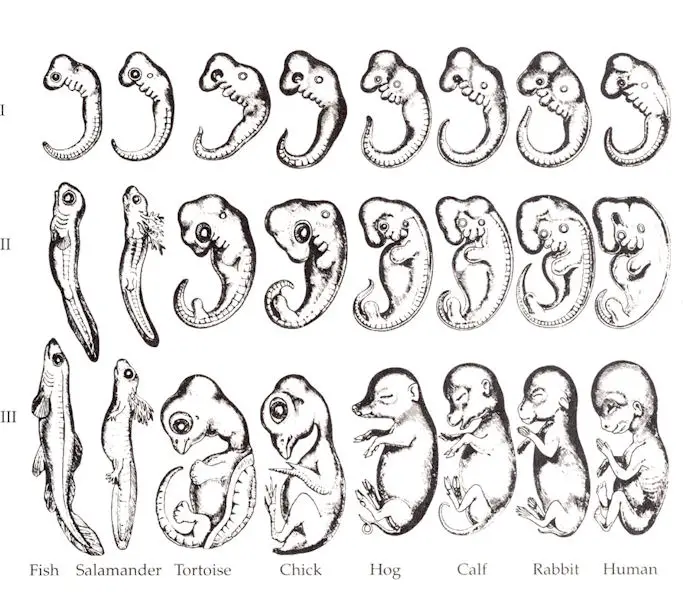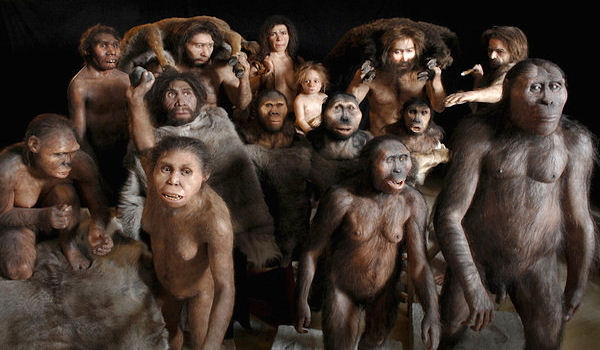The Truth About Hair and why Indians would keep their hair long
Reported by C. Young
Tags:
Replies to This Discussion
-
Permalink Reply by Maria De Wind on January 1, 2015 at 12:05am
-
Permalink Reply by Klaudio Vinkerlić on January 1, 2015 at 4:11am
-
Yes. The hair is making us more intuitive as having better signals receiver.
Happiness in this Calendar Year.
-
Permalink Reply by Deep Space on March 13, 2015 at 4:45pm
-
6 Month ‘No Shampoo Experiment’ Results in Shinier Healthier Hair
My switch to washing hair with baking soda and apple cider vinegar was supposed to last only a month, but now I can't stop.
http://www.treehugger.com/organic-beauty/no-shampoo-experiment-six-...
-
Permalink Reply by Maria De Wind on May 31, 2015 at 2:01pm
-
Permalink Reply by Maria De Wind on June 24, 2015 at 12:46pm
-
Permalink Reply by DTOM on April 3, 2016 at 9:36am
-
Nakedness Could Decode The Mystery of Human Origins

30th March 2016
By Sayer Ji
Contributing Writer for Wake Up World
The human obsession with nakedness constitutes a multi-billion dollar industry unto itself (pornography), but the fact that, among hundreds of different primates, we are the only one that is almost completely hairless, is rarely if ever considered. Indeed, understanding human nakedness may help to unlock the timeless enigma of how and where our species originated.
Nakedness and the Mystery of Human Origins
Have you ever considered the curious fact of human hairlessness? Except for facial hair in men, and scalp, underarm, and pubic hair in both men and women, we are alone among primates in having lost our protective and heat-conserving coat of hair. While I’m certain some may contend nakedness was a default human condition, beginning with original sin in the Garden of Eden, the evidence of biology is hard to ignore (after all, we all live in this highly enigmatic body). Take embryogenesis as an example…
It is simply amazing that the embryo undergoes developmental phases that recapitulate the morphological evolution of our species over millions of years. Known as ontogeny recapitulates phylogeny, a fancy way of saying the development of the individual repeats the development of the species as a whole, the human embryo moves through the following developmental phases: single-celled, aquatic (with rudimentary, fish-like gill slits), reptilian, rodent-like phases, and then moving through a simian phase near the end of gestation sporting a layer of downy fur known as the lanugo, which the fetus sheds about a month before birth. On rare occasions the lanugo is retained briefly after birth, as depicted below.
Fetal whales and dolphins (rare examples of aquatic mammals) also develop lanugo, indicating that in a preceding terrestrial evolutionary phase they were, like humans, also covered in fur. Evolution builds off preceding stages of physiological accomplishment, and our bodily form, whether it conflicts with our religious or philosophical precepts or not, tells a very compelling story of billions of years of biological evolution, adaption, and survival. The extremely non-arbitrary physiological construction of the human body, wrought over the glacial scale of biological time, cries out for an explanation. And so, hairlessness provides a powerful clue to the perennial and largely unresolved question of human origins. The fact that humans have not yet answered basic questions of physiology, such as why we have ten fingers and toes, or, why we no longer have hair, speaks to the relatively infantile stage of self-understanding our species is still presently moving through.
What We Think We Know About Human Hairlessness
Since the time of Charles Darwin, and no doubt long before, the nakedness of our default bodily condition has been a matter of intense speculation. Darwin suggested that hairlessness may have been a factor in sexual selection: the less hair, the more attractiveness, noting also the curiosity that women have less hair then men.
A far more complex and I believe compelling explanation was provided by Elaine Morgan, the feminist biologist, with her Aquatic Ape theory. Namely, it was the sudden flooded state of the African savannah about 7 million years ago that lead our pre-human hairy ancestors (not unlike what happened to our mammalian relatives the dolphin and whale when they decided to go backto the ocean) to either die or adapt to an semi-aquatic environment, where the loss of body hair, control of breathing (for diving, and eventually speech), increased subcutaneous body fat (humans are the fattest primates), capacity for water birth, etc., provided a series of survival advantages.
Incidentally, modern genetic analyses indicate that the mutation for hairlessness appeared sometime around 6 million years ago in a pre-human lineage.
Several more recent hypotheses suggest that the hairless mutation was a driving force of humanization from a human-ape common ancestry, either by enforcing upright walking (bipedalism) while holding a ba..., or through encouraging romantic attraction in our species in what has been called the “naked love theory,” summarized below:
“This theory locates the origin of human hairlessness in the ancestral mother–infant relationship. In this view, hairlessness is ultimately the adaptive consequence of bipedalism. Because of bipedalism, ancestral infants lost their prehensile feet and thus lost the ability to grasp the mother’s fur with their feet, as do other primate infants. Early bipedal mothers were thus under pressure to carry the infant. Therefore infants survived only if mothers had a strong desire to hold them. Because of the pleasure of skin-to-skin contact, the desire to hold the infant would have been stronger in mothers possessing a hairless mutation that enabled them to give birth to hairless infants. Survival of these infants would have then been greater than that of hair-covered infants. The hairlessness that began to appear in this context of maternal selection was then reinforced by sexual selection in the male–female sexual relationship. This is because a hairless sexual partner would have enabled the hairless individual to recreate the pleasure of skin-to-skin contact in the mother–infant relationship. This theory then helps to explain the evolutionary origins of romantic love.”
There are many more proposed explanations floating around. For instance, some have theorized that the loss of most of our body hair enabled us to evolve more sweat glands, which made possible greater self-regulation of our bodily temperature. Others contend that hairlessness enabled our nervous system, via our exposed and more sensitive skin, greater access to environmental cues, giving us a critical edge that would eventually lead us towards attaining our apical position on the food chain, as the world’s deadliest predator. But these latter two explanations are weak, since no other example of this kind of adaption exists among primates, and few among mammals. Also, creatures that must expend a great deal of energy to produce their own body heat, and who must face drastic fluctuations in ambient temperatures, pay a steep price for losing their insulating fur. Within this context, the mutation for hairlines would have had to have provided a significant, and near immediate set of benefits to have been positively selected for, enabling it to undergo a species-wide genetic sweep to become a dominant trait.
What could have been behind this? Perhaps the answer lies within dimension of human physiology known as cellular bioenergetics, i.e. the energy flows and requirements of the human body. While elements of the aforementioned evolutionary explanations for hairlessness may retain validity, and likely may have participated in the transition to nakedness, the primary biological motivation and justification for the development of human hairlessness may be in how nakedness made available a much larger quantity of energy to the body, and particularly, the energy-hungry brain.
A Compelling New Explanation for Human Hairlessness: Enabling Humans To Harvest Sunlight As Food?
A new paper published in Medical Hypothesis, titled, “Did human hairlessness allow natural photobiomodulation,”Did human ...,” proposes a unique explanation to account for our status as the naked ape, along with another curious distinguishing trait of our species, namely, the relatively rapid development of our huge brains (encephalization), which is believed to have undergone rapid acceleration about 2 million years ago.
Ian Mathewson, a retired medical practitioner, writing from Brisbane Austraila, summarizes his hypothesis as follows:
“Present hypotheses to explain human hairlessness appear to be inadequate because hairlessness is not accompanied by any immediate benefit. A new, testable, hypothesis is advanced to explain our hairlessness based on photobiomodulation research, also known as low-level light therapy. This shows that red and near infrared radiation has a very beneficial effect on superficial tissues, including the brain. Random mutation/s resulting in complete hairlessness allowed early humans to receive daily doses of red and near infrared radiation at sunset. Photobiomodulation research shows this has a twofold effect: it results in increased mitochondrial respiratory chain activity with consequent ATP ‘extrasynthesis’ in all superficial tissues, including the brain. It also advantageously affects the expression of over 100 genes through the activation of transcription factor NFkB which results in cerebral metabolic and haemodynamic enhancement. It is also possible that melanin can supply electrons to the respiratory chain resulting in ATP extrasynthesis. These effects would start automatically as soon as hairlessness occurred resulting in a selective sweep of the mutation/s involved. This was followed by the very rapid brain evolution of the last 2my which, it is suggested, was due to intelligence-led evolution based initially on the increased energy and adeptness of the newly hairless individuals.”
For those who are not yet aware of the the extensive body of research on the benefits of red and near infrared radiation on biological systems, including chronic and acute disease states, it may come as a surprise to learn that these monochromatic or quasi monochromatic wavelengths of light energy are capable of stimulating so-called ATP extra synthesis, basically helping to supplement the cells’ energy requirements by ‘supercharging’ photo accepting complexes within the electron transport chain and related elements of oxphos, as well as activating and/or positively modulating over 100 genes, some of which are antioxidant and longevity promoting. Known as photobiomodulation, or low level laser therapy, these light-based interventions enact both energy and information based changes in affected tissues through non-thermal processes. This discovery that light energy can be harvested and transduced into metabolically and genetically significant energy and information truly represents a quantum leap in medicine.
In Mathewson’s hypothesis above, a random mutation for hairlessness occurring in one of our African forebearers some 2 million years ago, conferred an immediate survival advantage over his hairy relatives by enabling her body, especially her brain, to access the red and near infrared wavelengths generated by ancient African sunsets.
Mathewson elaborates further:
-
Permalink Reply by DTOM on April 3, 2016 at 9:37am
-
“As PBM [photobiomodulation] research shows, it allowed the extrasynthesis of ATP energy and also allowed R&NIRR to penetrate the then hairless skull to favourably alter the expression of numerous genes and enable cerebral metabolic and haemodynamic enhancement; it is suggested that this was the starting point for the rapid intelligence-led evolutionary brain expansion which occurred after the appearance of our genus Homo. Regarding the biphasic nature of PBM, it is suggested that exposure to a physiologically correct low dose of R&NIRR at dusk every evening would constitute the original natural PBM. This radiation is followed by 12 h of darkness during which the genetic actions of the radiation can be set in place; the same radiation delivered at dawn may be of questionable efficacy since it is immediately followed by an excessive dose of all visible wavelengths. None of the effects described above could have occurred had our ancestors not become hairless. The immediate uptake, in a rapid genetic sweep, of the mutation/s causing hair- lessness occurred because hairlessness and its benefits happened concurrently.”
There are additional natural consequence of hairlessness addressed by Mathewson, firstly, the increased degradation of folate through ultraviolet light exposure. This can have deleterious if not deadly effects, as folate is essential for the neural tube in embyrogenesis, among many other biological processes. For instance, MTHFR SNPs are notorious for conferring increased risk for various health problems due to their interference with folate production and/or utilization. Secondly, hairlessness would have increased our ability to produce vitamin D3, an essential component for neurological development and the neuroplasticity and interconnectivity essential for intelligence (not to mention for the stability of our entire genome). This could have further increased brain development both in sheer size as well as the complexity of neural circuits. A third factor — perhaps the most provocative idea of all — is melanin-mediated energy production.
The sudden shift to hairlessness would have necessitated the increased production of melanin, first as a sun protectant, but secondarily, as a means to harvest sunlight energy and convert it into metabolically/chemically useful energy. As we have focused on in previous writings, melanin’s manifold functionality in the body includes its role as a biological “solar panel”, enabling our species to transcend the conventional heterotroph (eats others for food)/autotroph (produces food from sunlight) dichotomy, entering into the third, though seldom mentioned photohetertrophic hybrid category.
Mathewson expands on the topic of the relevance to hairlessness of melanin-mediated energy transduction in greater depth, starting with the fascinating example of the extraordinary bioenegetic capabilities of highly melanized radiographic fungi (which we also reported on recently):
“Now to the strange story of a fungus growing on the walls of the burnt-out nuclear reactor at Chernobyl. This fungus, Cryptococcus neoformans normally synthesises melanin, and when exposed to gamma radiation 500 times greater than background was found to grow significantly faster than either non-irradiated cells or irra- diated albino mutants [51] – a phenomenon referred to as ‘radiosynthesis’ [52]. Melanin is a biopolymer containing quinone moieties (similar to molecules in complex II of oxphos) which are thought to be responsible for melanin’s redox behaviour and consequent electric current generation after exposure to gamma radiation [52]. This current was increased by adding a reductant. Exposure to visible light increases the proportion of quinone molecules in the melanin biopolymer while UV light is said to dra- matically increase the ability of melanin to oxidise NADH [53]. Dadachova et al. [51] ‘cautiously suggested’ that melanin may endow melanotic organisms with the ability to harness electro- magnetic radiation for metabolic energy. Bryan et al. [53] investigated the oxphos potential of melanised and non-melanised C. neoformans to generate ATP after gamma, UV and visible radiation. The interesting results, perhaps involving the ATP paradox [54], caused the authors to raise the possibility that melanins may have energy harvesting powers similar to chlorophyll. Work on solid pellets of eumelanin has shown it to be an electronic-ionic hybrid conductor which can dope itself with water to produce free radicals, electrons and protons [55].
Extrapolating from fungi to mammals is a big leap, but the type of melanin in C. neoformans, eumelanin, is the same as that produced in the skin of living Africans; the absorption spectrum of phaeomelanin in Caucasians is similar although it does decrease more rapidly in the R&NIR range (Fig. 2). The basic form of oxphos is similar in aerobic fungi and humans [56]. It seems possible that an indirect form of ATP extrasynthesis could operate in humans due to the interaction of solar radiation with melanin. The quinone moieties of melanin would donate electrons, activated by light photons, to the quinone pool of oxphos and thence down the ETC [electron transport chain] in a similar way to methylene blue [43]. The quinone pool contains quinone molecules only loosely associated with their enzymes; quinones facilitate the redox reactions of the ETC by accepting electrons from dehydrogenases and donating them to oxidases. Since the melanosomes in human melanocytes and keratinocytes are separate organelles from the mitochondria, it is suggested that cytoplasmic NAD+ can pick up two electrons and a proton from the melanosomes to become reduced NADH. Then, because NADH cannot cross the inner mitochondrial membrane, it is carried to the membrane by one of several mitochondrial shuttles; its electrons are delivered to FAD producing FADH2, and they can then enter the ETC [57] and result in ATP extrasynthesis.
The above scenario is supported by an experiment carried out by Dadachova’s group [51]. They measured the ability of melanin to act as an electron transfer agent in a reaction involving the oxidation of NADH and reduction of ferricyanide with and without either gamma, UV, visible or infrared radiation. All four types of radiation caused a marked increase in electron transfer and sur- prisingly the increase was not dependent on the energy of the incident photons.”
And so, if human hairlessness enabled us to transition from a species entirely dependent upon the consumption of other living things in order to survive and/or thrive, into a species that could supplement with the Sun’s virtually limitless supply of “free energy,” it would make sense why we would have undergone such a rapid divergence from all other primates who did not possess this ability, or at least not to the same degree. Also, if one of the primary side effects of this transformation into photoheterotrophs was the rapid increase in the sizes of our brains (encephalization), this would have had a profound affect on the mother-infant dyad. A larger brain and head would have precluded the full maturation of the human infant within the womb. Instead, in order to survive passage through the birth canal, the infant would have had to be born earlier and therefore much needier state. Obviously, this theory might help to explain why humans are uniquely co-dependent, and why bipedalism would have freed up the mother’s arms to take care of an infant incapable of survival for months on end without extreme care. Whereas previously fur may have been sufficient for a pre-human ancestor’s far more developed offspring could attach to, this would no longer be the case following encephalization, rendering hair much less important for the survival of the species.
There are many implications of this new theory worth discussing, but for now, we only wish to introduce the concept to stimulate further discussion and increase awareness of alternative ways of understanding human evolution.
Mathewson summarizes the findings of his paper thusly:
“As a result of research into PBM [photobiomodulation] and the effects of R&NIRR [red and near infrared radiation] it is proposed that the primary spark for the last 2my of human brain evolution was hairlessness, which allowed ATP extrasynthesis and cerebral metabolic and haemodynamic enhancement. This drove the very rapid brain expansion in an evolution that started around 1.8mya. While the Pleistocene climate was still equable 2mya, there was an immediate advantage in becoming hairless in Africa – it allowed ATP extrasynthesis and natural PBM at dusk every evening. But recently as it became colder and with the redevelopment of scalp hair and the necessity to wear clothes, advantage turned to liability in Europe and northern Asia. Although vitamin D synthesis has benefited from hairlessness, this was fortuitous. Vitamin D continues to play an important role in brain evolution, although clothes restrict its synthesis and deficiency is common, especially in the elderly. It is hoped that this hypothesis will encourage further research into PBM as a non-invasive effective treatment for neurological conditions in particular, using repeated treatments as in [24].”
Recommended articles by Sayer Ji:
- Noni Leaf Extract Superior to Chemotherapy for Lung Cancer (Preclin...
- Better Than Chemo: Turmeric Kills Cancer Not Patients
- Mammography Is Harmful and Should Be Abandoned, Scientific Review C...
- Cinnamon May Be Superior to Ibuprofen for Menstrual Pain, Study Rev...
- “Killer Germs” Obliterated by Medicinal Smoke Smudging, Study Reveals
- Coconut Water: A New Alzheimer’s Disease Treatment?
- Turmeric’s ‘Smart Kill’ Properties Put Chemo & Radiation To Shame
- 6 Evidence-Based Ways Drumming Heals Body, Mind and Soul
- Tylenol Kills Emotions As Well As Pain, Study Reveals
- Research: Plants Cure Cancer, Not Chemicals
- Beet Juice Boosts Cognitive Function In One Dose
- 13 Evidence-Based Medicinal Properties of Coconut Oil
- 25 Cancer Stem-Cell Killing Foods That Are Smarter Than Chemo and R...
About the author:
 Sayer Ji is on the Board of Governors for the National Health Federation and Fearless Parent, Steering Committee Member of the Global GMO Free Coalition (GGFC), a reviewer at the International Journal of Human Nutrition and Functional Medicine, and founder of GreenMedInfo.com – an open access, evidence-based resource supporting natural and integrative modalities.
Sayer Ji is on the Board of Governors for the National Health Federation and Fearless Parent, Steering Committee Member of the Global GMO Free Coalition (GGFC), a reviewer at the International Journal of Human Nutrition and Functional Medicine, and founder of GreenMedInfo.com – an open access, evidence-based resource supporting natural and integrative modalities.In 1995 Sayer received a BA degree in Philosophy from Rutgers University, where he studied under the American philosopher Dr. Bruce W. Wilshire, with a focus on the philosophy of science. In 1996, following residency at the Zen Mountain Monastery in upstate New York, he embarked on a 5 year journey of service as a counsellor-teacher and wilderness therapy specialist for various organizations that serve underprivileged and/or adjudicated populations. Since 2003, Sayer has served as a patient advocate and an educator and consultant for the natural health and wellness field.
For more, visit GreenMedInfo online and on Facebook, or sign up for GreenMedInfo’s e-Newsletter.
- ‹ Previous
- 1
- …
- 20
- 21
- 22
- Next ›
"Destroying the New World Order"
THANK YOU FOR SUPPORTING THE SITE!
Latest Activity
- Top News
- ·
- Everything
Sebastion Piñera and 5G
© 2025 Created by truth.
Powered by
![]()




http://wakeup-world.com/2016/03/30/nakedness-could-decode-the-myste...